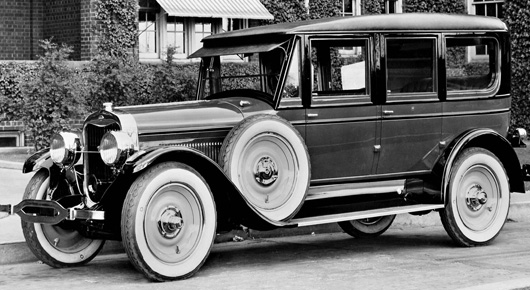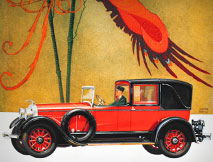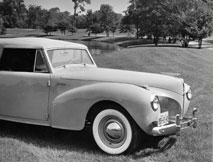News Center
News CenterAcquiring the Lincoln Brand
By Leslie Ambruster
 1924 Lincoln Fleetwood Limousine.
1924 Lincoln Fleetwood Limousine.In 1921, auto pioneer Henry Leland was forced to sell the automotive company he had formed with his son Wilfred.
Named in honor of President Abraham Lincoln, the Lelands had set up the Lincoln Motor Company in 1917 to build aircraft engines for the Allies. When World War I ended, the company began building luxury cars but financial troubles forced it into bankruptcy in 1921.
But Edsel Ford saw potential value in Lincoln and, at his urging, Ford Motor Company bought what remained of the company for $8 million on Feb. 4, 1922.
 1928 Lincoln advertisement.
1928 Lincoln advertisement.By June, the Lelands were gone and Edsel took control of the brand, remaining integral to its operation until his untimely death in 1943.
The younger Ford was a patron of the arts and as such, he appreciated the beauty of the automobiles as much as its functionality. He engaged noted coach builders from all over the country, such as Brunn, Judkins, and LeBaron, to design and produce special, luxury bodies for Lincoln. He also chose the leaping greyhound hood ornament for the Lincolns of the 1920s as a symbol of speed and grace.
In its history, the Lincoln division produced many iconic vehicles including the original 1939 Lincoln Continental (which inspires the Lincoln grilles of today), President Franklin D. Roosevelt’s “Sunshine Special” Limousine and even the 1955 Futura concept car that later became the original Batmobile.
 1941 Lincoln Continental Convertible.
1941 Lincoln Continental Convertible.Ironically, Henry Leland and Henry Ford had crossed paths once before. In 1902, Leland had been called in as an engine advisor to one of Ford’s early car companies. Ford promptly resigned and Leland reorganized the company – to create Cadillac.









Connect With Ford
Ford Motor Company on Facebook
Ford Motor Company on YouTube
Follow @Ford on Twitter
Ford Motor Company on Flickr